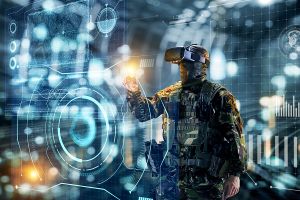 Today's organizations know that stopping 100% of cyber-attacks is not a realistic goal. Rather, the focus has shifted to cyber resilience, "the ability to anticipate, withstand, recover from, and adapt to adverse conditions, stresses, attacks, or compromises on systems that use or are enabled by cyber resources."
Today's organizations know that stopping 100% of cyber-attacks is not a realistic goal. Rather, the focus has shifted to cyber resilience, "the ability to anticipate, withstand, recover from, and adapt to adverse conditions, stresses, attacks, or compromises on systems that use or are enabled by cyber resources."
A critical pillar in becoming resilient is communication and collaboration. The Cyber EO focused on improving the nation's cybersecurity and highlighted the need to improve collaboration with threat intelligence sharing between public and private organizations as well as the creation of cross-government cyber boards. In recent months, key strides have been made in facilitating information sharing around cyber best practices, resource availability, as well as process and policy. Continue reading

 Like many industries, the pandemic forced the court system to rethink how they deliver services and carry out everyday business. Courts had been slow to adopt technology with
Like many industries, the pandemic forced the court system to rethink how they deliver services and carry out everyday business. Courts had been slow to adopt technology with Virtual Reality (VR) has strong roots in the military. Long used for training and simulations, the military has helped develop VR technology and continues to innovate in how it can be used. VR continues to be invaluable to tactical, mission training but is also being used in other training areas. For example, the
Virtual Reality (VR) has strong roots in the military. Long used for training and simulations, the military has helped develop VR technology and continues to innovate in how it can be used. VR continues to be invaluable to tactical, mission training but is also being used in other training areas. For example, the  Ransomware has traditionally been a practice where cybercriminals encrypt data and demand ransom in exchange for a decryption key. More recently, a growing number of these bad actors threaten to make this information public if they do not get paid. This shift in the practice of ransomware has increased the "attractiveness" of K-12 schools for cyber criminals. Information about children is among the most highly protected data there is, making it more likely ransoms will be paid to keep it private. For this and other reasons, K-12 schools are seeing an increase in ransomware activity. In 2021, there were at least
Ransomware has traditionally been a practice where cybercriminals encrypt data and demand ransom in exchange for a decryption key. More recently, a growing number of these bad actors threaten to make this information public if they do not get paid. This shift in the practice of ransomware has increased the "attractiveness" of K-12 schools for cyber criminals. Information about children is among the most highly protected data there is, making it more likely ransoms will be paid to keep it private. For this and other reasons, K-12 schools are seeing an increase in ransomware activity. In 2021, there were at least  With many of us using our faces to "open" our phones, biometric technology has become an everyday consumer technology. Capitalizing on the comfort and ease of use of facial recognition, government agencies are looking to incorporate it (and other biometric methods) into their modern cybersecurity plans and approaches but are realizing implementation in a government setting raises a host of complications.
With many of us using our faces to "open" our phones, biometric technology has become an everyday consumer technology. Capitalizing on the comfort and ease of use of facial recognition, government agencies are looking to incorporate it (and other biometric methods) into their modern cybersecurity plans and approaches but are realizing implementation in a government setting raises a host of complications.
